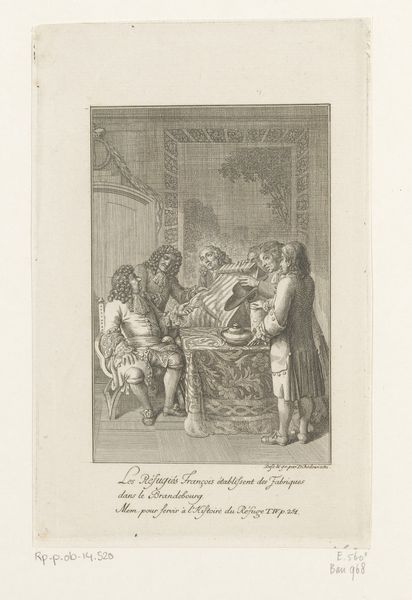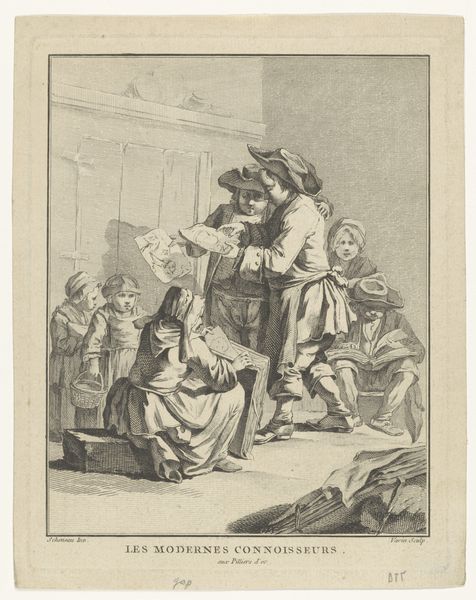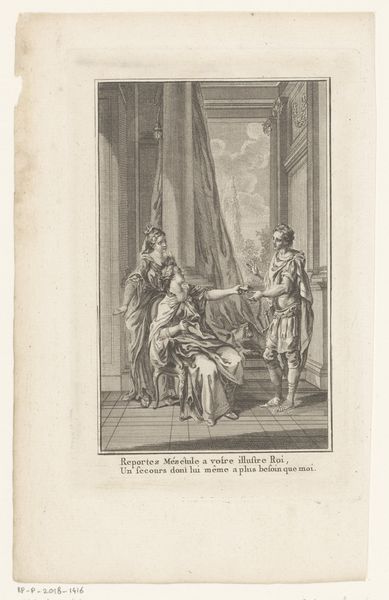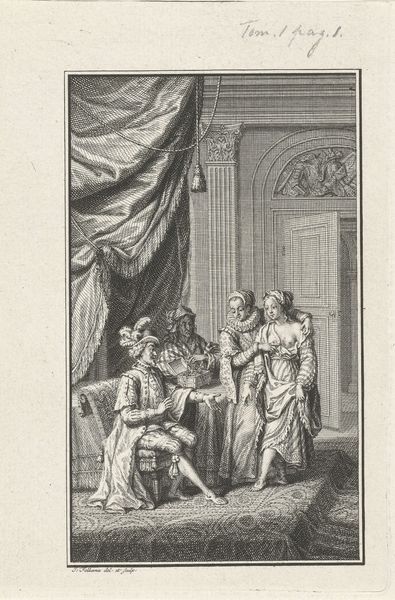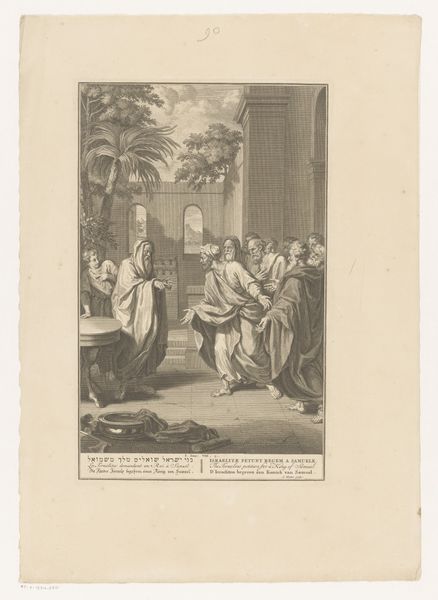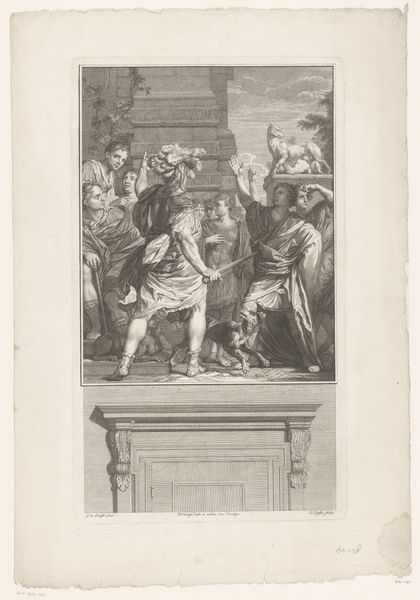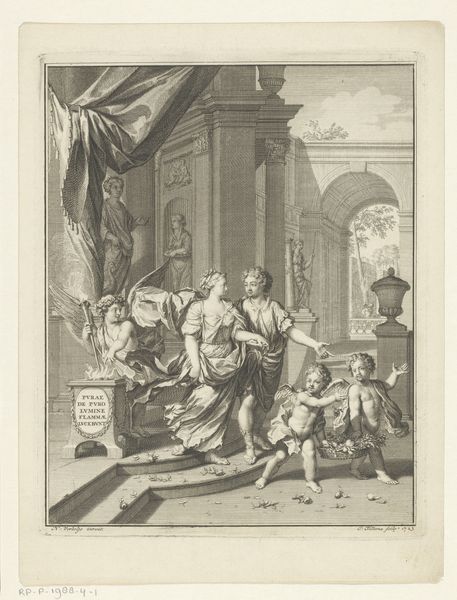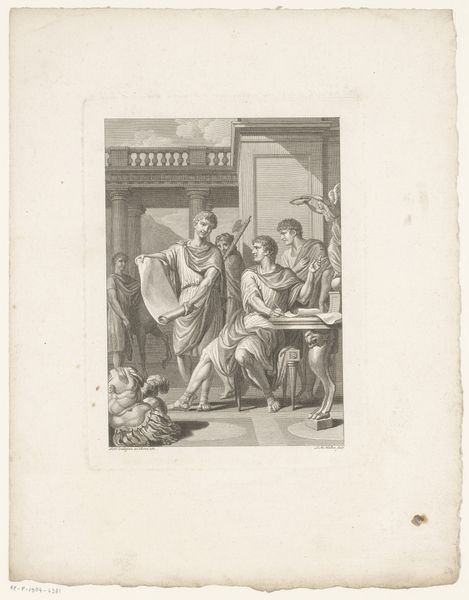
Dimensions: height 182 mm, width 132 mm
Copyright: Rijks Museum: Open Domain
Curator: This engraving by Nicolas Ponce, dated to 1780, depicts an interior scene with a nobleman kneeling before a lady. It's currently held in the collection of the Rijksmuseum. Editor: My first impression? Drama. A stage play frozen in monochrome, with the bowed head of the nobleman taking center stage, quite literally at the center of the frame. Curator: Absolutely, the scene evokes a theatrical sensibility, drawing perhaps from the conventions of Baroque and history painting prevalent at the time. The inscription identifies the lady as 'La Duchesse de Chatillon', pointing to its grounding within the social world of the French aristocracy. It's all about codes of conduct, expressions of power and decorum in court society. Editor: Note the details beyond the central figures. In the background, another gentleman appears to usher someone in, whilst two onlookers observe the act of supplication with apparent concern. What are your thoughts about these figures of witness, regarding its significance in the cultural history of the event? Curator: Precisely. They act as vital spectators, reminding us that these displays of power and entreaty are also about visibility and maintaining appearances within their social circles. It reflects an environment in which relationships are constantly mediated by spectacle. Their subtle reaction mirrors the tension present, acting as if they are chorus figures. Editor: Symbols abound here. The sword lying at the feet of the kneeling figure immediately signals submission. What I find fascinating is how this resonates with pre-chivalric images where disarming or surrendering one's weapon meant more than just defeat but a symbolic death of self. What can it be telling us here about that idea, about identity, within this specific historic frame? Curator: A compelling reading! And given the context of the French aristocracy on the brink of revolution, the submissive imagery hints at wider anxieties of declining authority and potential reversals in power structures. The engraving operates not only as a record, but also as a register for broader shifts in societal anxieties. Editor: I agree. I notice how, through this particular combination of symbols and styles, Ponce seems to reflect not just a literal surrender, but a cultural and psychological posture for the French aristocracy at this pivotal moment. A visual reflection of deep change and anxieties present at the time. Curator: Ultimately, this engraving shows us that even seemingly straightforward historical images can be rich sources of insight into the complexities of power and social identity during times of significant transition. Editor: Agreed, the engraving successfully captures a complex emotional atmosphere, offering both a historical document and a captivating insight into human relationships.
Comments
No comments
Be the first to comment and join the conversation on the ultimate creative platform.

